Art is appreciated and received by people in different ways. For billionaires, owning a piece of art can signify their status.
The Most Expensive Works of Art in the World
- 10. Portrait of Adele Bloch-Bauer I by Gustav Klimt – $158.7 million
- 9. Woman III by Willem de Kooning – $161.6 million
- 8. Masterpiece by Roy Lichtenstein – $165 million
- 7. Portrait of Maerten Soolmans and Oopjen Coppit by Rembrandt – $182 million
- 6. No. 6 (Violet, Green and Red) by Mark Rothko – $194.6 million
- 5. When Will You Marry? by Paul Gauguin – $213 million
- 4. No. 17A by Jackson Pollock – $203 million
- 3. The Card Players by Paul Cézanne – $270 million
- 2. Interchange by Willem de Kooning – $304 million
- 1. Salvator Mundi by Leonardo da Vinci – $450.3 million
Most famous paintings, especially those by master painters, are held by museums. Leonardo da Vinci’s Mona Lisa holds the record for the highest insured value in history—valued at $100 million in 1962, equivalent to $620 million in 2016 when adjusted for inflation. However, since the Mona Lisa is not for sale, the top spot on the list of the most expensive paintings in the world is held by another work by Leonardo as detailed below.
10. Portrait of Adele Bloch-Bauer I by Gustav Klimt – $158.7 million
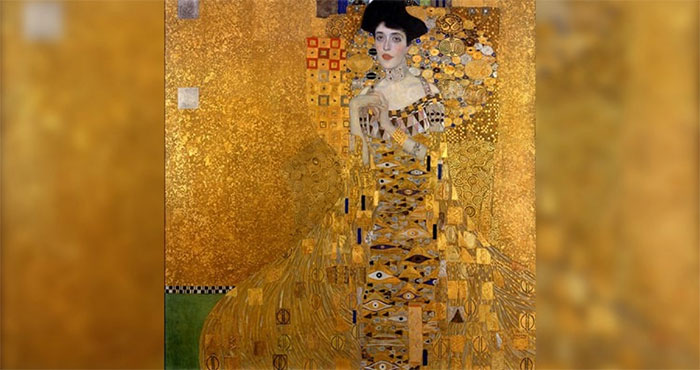
Source: factsc.com
After being commissioned to create the portrait, Klimt produced over a hundred preparatory sketches from 1903 to 1904. Following his meticulous preparation, Klimt used gold and silver leaf to enhance the decorative patterns in the painting. Created from 1903 to 1907, the Bloch-Bauer portrait was stolen by the Nazis in 1941, later displayed at the Österreichische Galerie Belvedere for decades, and returned to the family in 2006 after an eight-year legal battle.
9. Woman III by Willem de Kooning – $161.6 million
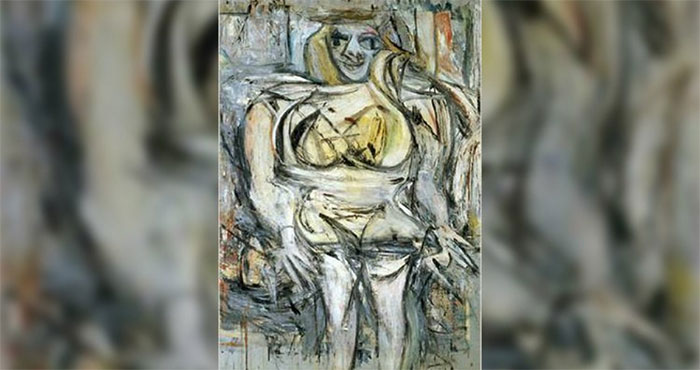
Source: factsc.com
De Kooning began painting women in the 1940s. His paintings depict them in a graffiti style with wide-open eyes, voluptuous breasts, smiles, and claw-like hands. Completed in 1953, Woman III is the only painting in a series of six women that remains in a private collection. Between the 1970s and 1990s, it belonged to the Tehran Museum of Contemporary Art but could not be displayed due to strict art regulations following the Iranian Revolution of 1979.
The painting was quietly traded to David Geffen in exchange for Shahnameh of Tahmasbi, a 16th-century manuscript of the longest epic poem in the world by the Persian poet Ferdowsi, created between 977 and 1010 AD. It was purchased by billionaire Steven A. Cohen in November 2006.
8. Masterpiece by Roy Lichtenstein – $165 million
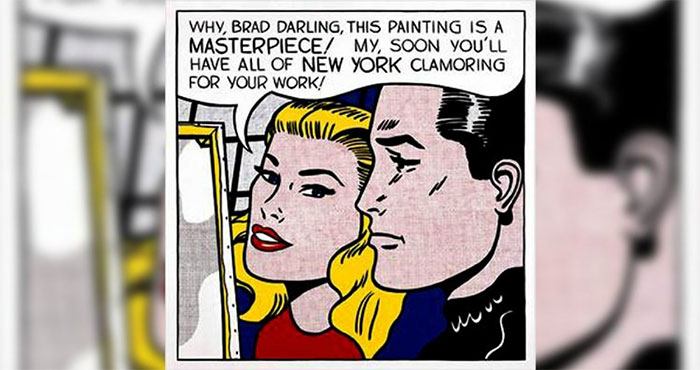
Source: factsc.com
This pop art painting, inspired by comic strips from 1962, employs Lichtenstein’s classic Ben-Day dots and speech bubbles, which many critics view as a sardonic commentary on his own career and a prescient reflection of his future fame. This American pop artist was a leading figure in the pop art movement of the 1960s alongside Andy Warhol, Jasper Johns, and James Rosenquist.
7. Portrait of Maerten Soolmans and Oopjen Coppit by Rembrandt – $182 million
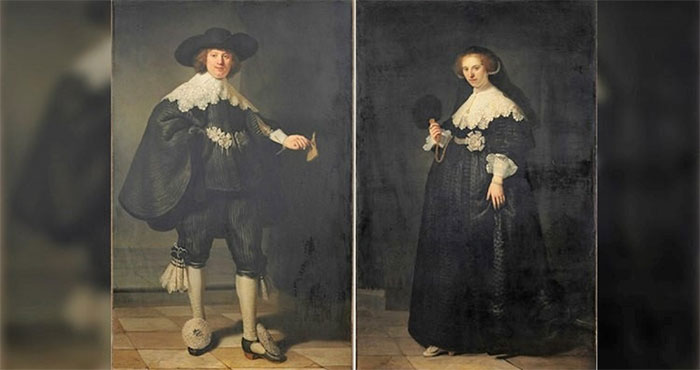
Source: factsc.com
Painted in 1634, this pair of portraits is considered unusual in Rembrandt’s work due to their size and the depiction of the subjects at full height. The portraits were created to commemorate the wedding of Maerten Soolmans and his wife, Oopjen Coppit, dressed as a wealthy newlywed couple in Amsterdam. Although they are two separate portraits, they have always been hung together. In 2015, the paintings became jointly owned by the Louvre Museum and the Rijksmuseum after both contributed half the purchase price.
6. No. 6 (Violet, Green and Red) by Mark Rothko – $194.6 million
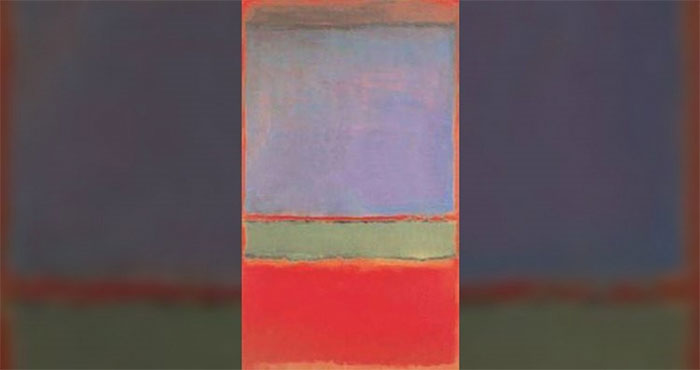
Source: factsc.com
Mark Rothko is known for bringing abstract expressionism into the art world with his paintings on large canvases filled with bold swathes of color. Painted in 1951, No. 6 consists of large color blocks interspersed with vague shades, and its disjointed title, like many of Rothko’s works, compels viewers to speculate about the emotions behind the painting.
Many critics suggest that the darker shades at the top of No. 6 reflect Rothko’s depression. The painting was purchased by Russian billionaire Dmitry Rybolovlev at one of the highest prices ever for a work of art through Swiss art dealer Yves Bouvier.
5. When Will You Marry? by Paul Gauguin – $213 million
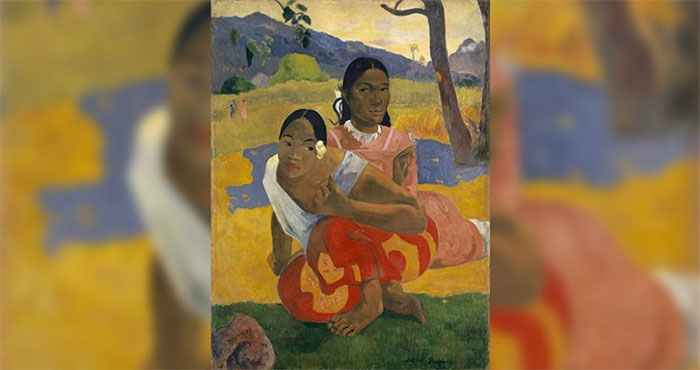
Source: factsc.com
Painted in 1892, at a time when Gauguin arrived in Tahiti only to find it unlike what he had imagined, with at least two-thirds of the population having died from diseases brought by Europeans during their colonization in the 18th century. Like most post-impressionist artists, Gauguin’s works were not highly valued during his lifetime. However, they are now celebrated for their synthetic style and experimental use of color.
4. No. 17A by Jackson Pollock – $203 million
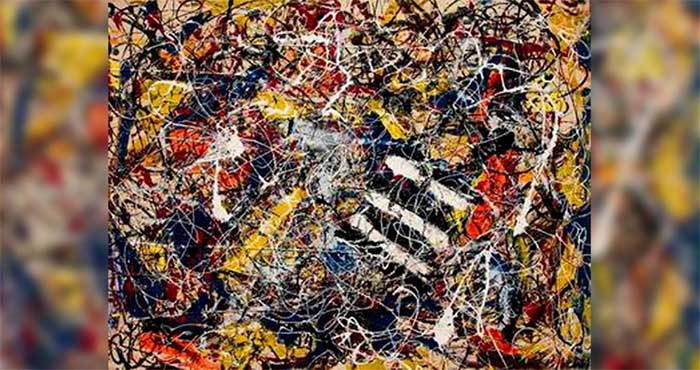
Source: factsc.com
Jackson Pollock is known for his contributions to the abstract expressionist movement, although his paintings were often undervalued and considered low in the art market. This abstract painting, created in 1948, is considered one of the quintessential examples of “drip painting,” a unique art form Pollock introduced in 1947. In 2016, No. 17A was acquired by billionaire art collector Kenneth C. Griffin, known for owning some of the most expensive paintings including Interchange by Willem de Kooning and False Start by Jasper Johns.
3. The Card Players by Paul Cézanne – $270 million
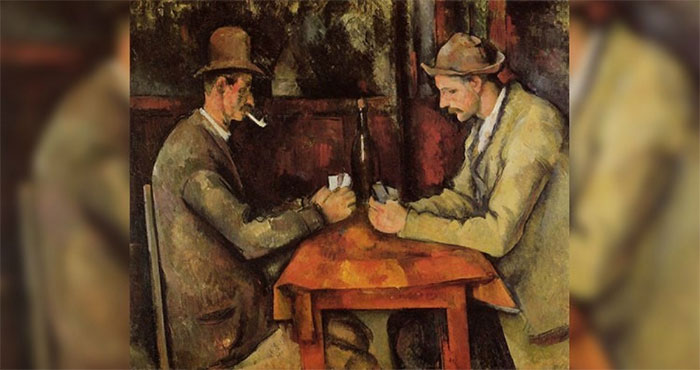
Source: factsc.com
By the mid-1890s, Cézanne’s subjects were Provençal farmers, some of whom worked on his family’s land, engrossed in their pipes and card games. He applied styles from 17th-century French and Dutch paintings depicting drunken, debauched gamblers in taverns. Painted in the early 1890s, this is one of five paintings in a series that critics regard as foundational to Cézanne’s art. The painting depicts serious men bent over their game in a very simple setting, notably devoid of drinks and money, except for an unused bottle of wine.
2. Interchange by Willem de Kooning – $304 million
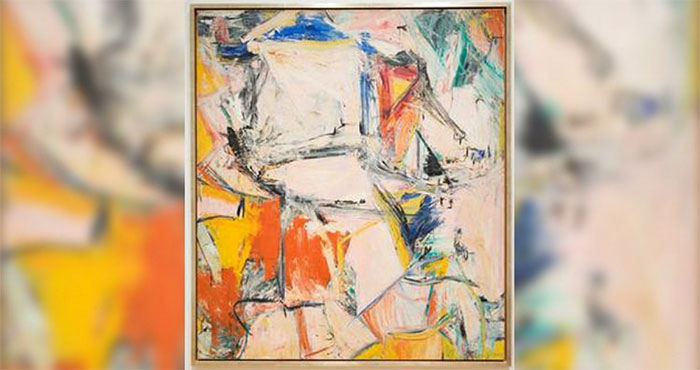
Source: factsc.com
Willem de Kooning is known as an influential artist who encouraged his friends and fellow artists, including Franz Kline, Arshile Gorky, and Jackson Pollock, among others, to embrace abstraction. Completed in 1955, Interchange is one of de Kooning’s early abstract landscapes and marks a shift in his style under the influence of his friend and artist, Franz Kline.
1. Salvator Mundi by Leonardo da Vinci – $450.3 million
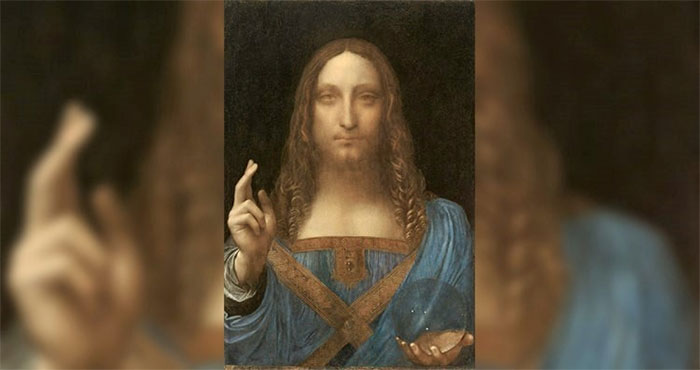
Source: factsc.com
Painted around the year 1500, the artwork depicts Jesus Christ in Renaissance vestments bestowing blessings. The painting is believed to have been lost in the 18th century and was preserved throughout the 19th century by Giovanni Antonio Boltraffio, a student of Leonardo da Vinci. Salvator Mundi is said to have arrived in England in 1625 and was inherited by Sir Charles Herbert Sheffield, the 1st Baron, who auctioned it in 1763 along with other artworks at Buckingham House.
Subsequently, the painting was thought to be missing until it was acquired in 1900 by Francis Cook, the 1st Baron of Monserrate. Cook’s great-grandson sold it in 1958 for £45. Salvator Mundi was auctioned in November 2017 and sold to Prince Badr bin Abdullah bin Mohammed Al Farhan, representing the Department of Culture and Tourism of Abu Dhabi. Commonly referred to as “the last da Vinci,” Salvator Mundi is the only known painting by the master still in private ownership.





















































